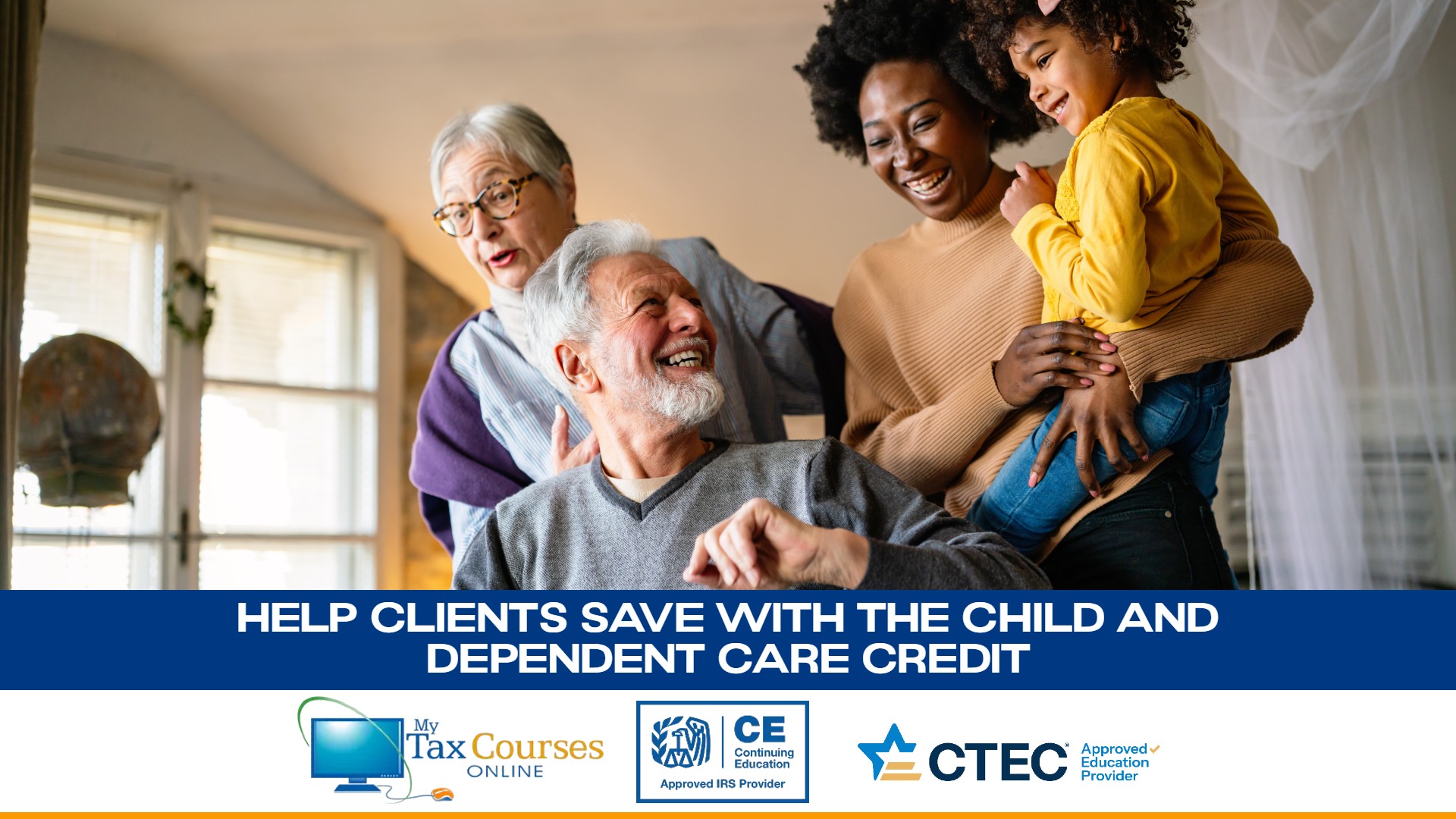If you prepare returns for working parents or caregivers, Form 2441 is one form you can’t afford to overlook. The Child and Dependent Care Credit helps offset the high cost of care for children under 13 or for a spouse or dependent who is physically or mentally unable to care for themselves. But the rules are complex—and many taxpayers (and preparers) leave money on the table due to common misunderstandings.
This non-refundable credit can be worth it, yet it is subject to earned income limitations, provider documentation requirements, and a maze of exclusions. Here’s a breakdown of the most important facts every tax preparer needs to know.
Who Qualifies for the Credit?
To claim the credit, seven IRS tests must be met, including:
- The care must be provided for a qualifying person (child under age 13, disabled spouse, or dependent).
- Both the taxpayer and spouse (if married) must have earned income.
- The care must enable the taxpayer(s) to work or look for work.
- Payments must not be made to a dependent or the child’s parent.
- Filing status must generally be married filing jointly, unless the taxpayer meets abandoned spouse rules.
Also note eligibility is figured day by day. For example, a child turning 13 mid-year will only qualify up until the day before their 13th birthday.
What Expenses Count?
While daycare centers and preschools are common, other costs can qualify:
- Nannies and babysitters (if paid to enable work)
- Before- and after-school care
- Nursery school or day camps
(but not overnight camps or tutoring)
Some expenses—like food or education—may count only if incidental and inseparable from care.
Common Pitfalls
- Claiming expenses without provider SSN/EIN – If the provider refuses to provide it, the taxpayer must prove they exercised due diligence.
- Incorrect treatment of benefits – Excess employer benefits over actual daycare expenses are taxable income.
- Incorrect filing status – Most married filing separately (MFS) taxpayers are not eligible, though exceptions exist.
But There’s More!
Thanks to the One Big Beautiful Bill Act (OBBBA), big changes are coming:
- The maximum credit percentage increases to 50% for AGIs under $15,000.
- The credit flattens at 35% (instead of 20%) at AGIs of $43,000.
- A second AGI phaseout kicks in at $150,000 for MFJ and $75,000 for other filers.
- The dependent care benefit cap rises from $5,000 to $7,500.
These changes make understanding both current and future rules critical for preparers.
Take A Dive Deeper

If you want to master Form 2441 and help clients claim every dollar they deserve, enroll in the My Tax Courses Online course: 2025 Child and Dependent Care Credits (Form 2441).
This IRS- and CTEC-approved course walks you through every step, including:
- How to determine eligibility
- Expense calculations
- Treatment of employer benefits
- Reporting on Form 2441 and Form 1040
- What’s changing in 2026 under OBBBA










